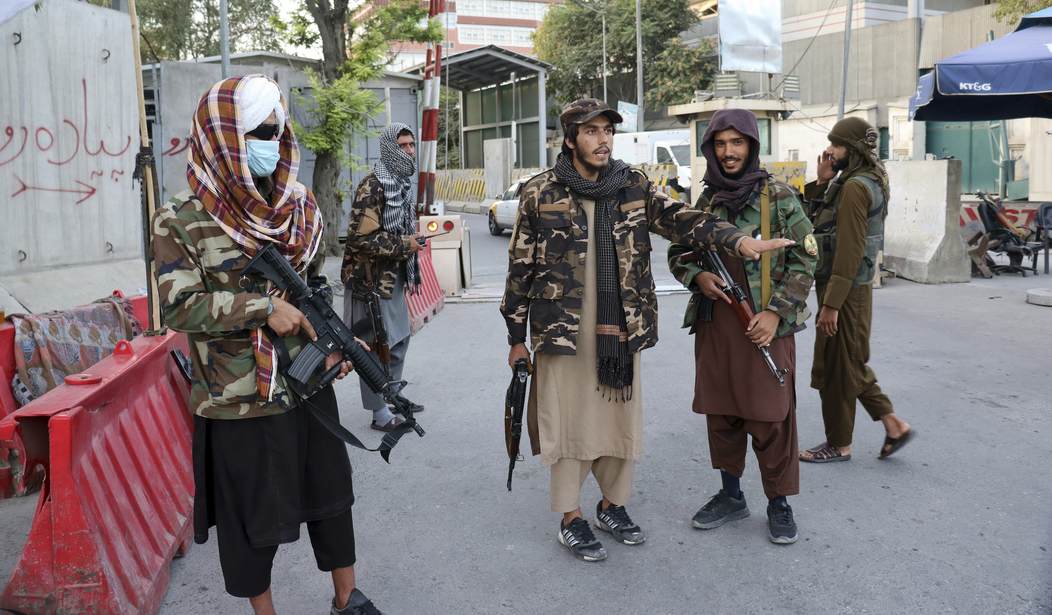While President Joe Biden believes that his withdrawal from Afghanistan was a success, one of Afghanistan’s former top counterterrorism officials is warning that the country is actually becoming a “jihadi utopia” controlled by terrorists and international drug dealers.
Ahmad Zia Seraj, who ran Afghanistan’s National Directorate of Security (NDS) until the Taliban took over his country, issued a scathing report cautioning that the country is “risk[ing] levels shifting back to pre-September 11th levels.”
Following the aftermath of Biden’s chaotic and botched withdrawal from Afghanistan, the country’s risk to its region and the world has risen. The Taliban prove that they are who we thought they were all along. For decades, Seraj worked at the NDS when the organization made significant strides in countering terrorism in the country – progress which has been entirely reversed since America’s surrender to the Taliban in August 2021.
Despite “the propaganda for Taliban 2.0,” Seraj wrote that “there is no single example to show the Taliban of the 1990s are more moderate than the Taliban of 2020s, who promoted and harbored terrorists which culminated in the 9/11 attack.” While the Biden administration maintains that the Taliban is a valid partner in counterterrorism, common sense, and the Taliban’s support from Afghanistan’s drug traffickers, defy this belief.
Afghanistan has a long history of an international drug trade financed in large part by the country’s massive poppy fields that are used for heroin manufacturing. Despite the Taliban’s ban on opium poppy cultivation, “there is plenty of evidence to suggest that the rich and powerful drug lords and weapons smugglers are becoming uncontrollable monsters in the region which could bring further instability and suffering beyond.” As for within Afghanistan’s own borders, there is a concern that “some of the drug lords and weapons smugglers are so rich and powerful that they will create a huge problem for any government in Afghanistan, if their interests are threatened.” Between the Taliban and their drug lord allies, the country is stuck between a rock and a hard place in terms of leaders.
Recommended
Following the withdrawal from Afghanistan, the Biden administration touted the successful drone strike that killed Al Qaeda leader Ayman al-Zawahiri, but the reality is that this “instance is emblematic of how terrorist groups in Afghanistan are hosted and sheltered by the Taliban.” Zawahiri was killed on the property of the Taliban regime’s interior minister. Under the 2020 Doha agreement, the Taliban pledged to not “harbor Al Qaeda members or those seeking to attack the U.S.”
And yet, the Biden administration claimed after the successful drone strike that “Zawahiri continued to pose an active threat to U.S. persons, interests, and national security.” How strange that the Taliban’s interior minister was providing aid, comfort, and housing for him!
Our so-called partners in counterterrorism are literally sheltering the terrorists we are trying to kill. The new interior minister of Taliban-controlled Afghanistan, on whose property Zawahiri camped out, is a member of the “widely-designated Haqqani terrorist network.” It seems like Biden’s April 2021 pledge to “hold the Taliban accountable for its commitment not to allow any terrorists to threaten the United States or its allies from Afghan soil” has gone completely out the window.
Seraj is far from the only Afghan ally of America who has lamented his country’s decline into a terrorist haven. A coalition of leaders, led by Afghan Armed Forces General Sami Sadat, warned last year that “today’s Afghanistan under the Taliban and their al-Qaeda allies, is again the greatest terrorist safe haven in the world.”
Almost immediately after Biden made the strategically inexcusable decision to abandon Bagram airfield, for example, the Taliban released over 10,000 prisoners–including Abdul Rahman al-Logari, who had been detained previously by NDS. Logari, Seraj notes, was “released by Taliban on the 15th of August...and later carried out the suicide bomb attack among the desperate crowd who wanted to enter the Kabul airport behind the Abbey Gate on the 26th of August, 2021.”
Logari, however, is far from alone in being released by the Taliban. “When the Taliban took over,” Seraj writes, “they released all the Republic detainees, including around 4000 ISKP [Islamic State of Khorasan Province] fighters, several hundred from other foreign terrorist groups, not to mention over 8,000 criminals who were involved in some major crimes including kidnapping, stealing, and murder.”
Lest anyone believe that this problem will remain isolated to Afghanistan, Seraj wrote that “most of these men are at large and it can be assumed that they remain active inside Afghanistan and beyond.”
Beyond the already-established failures, Seraj cautions that the future of Afghanistan is at risk as well – and that Americans are acutely aware of the problems when Afghanistan rears its head in our affairs. Following America’s shameful surrender, a new crop of “extreme and violent madrassas (seminaries) [is] fueling the increase of radicalization and creating future generations of terrorists.” These schools, many of which are based in Pakistan, are “perhaps the biggest producer of suicide bombers in Afghanistan.”
The Taliban has famously banned education for most girls in the country, a decision which has been facilitated by the “hundreds of small, and large, extremist madrasas [that] have been established inside Afghanistan under the instruction of senior students who are mainly graduates of the Pakistani-based seminaries.” Afghanistan isn’t exactly a harbor of school choice either.
“There is no escape from the indoctrination,” Seraj wrote of students of the madrassas. “They will become an adult that distrusts and hates anyone that is not exactly like them, to include, people of other religious views, different heritage, and especially women and girls that try to live a normal life.” As if the stated desire that many of these young men have for global jihad isn’t something we need to take seriously.
Other Afghanistan experts echo Seraj’s concerns about radicalization from madrassas. “The current terrorist threat in Afghanistan is as great as the period leading up to September 11th,” Jason Howk, the director of Global Friends of Afghanistan, said. “With the rise in Afghanistan of Pakistan-style terrorist-producing madrassas, the future of terrorism’s growth could give us something more brutal than the terrorists of ISIS, [Al Qaeda], Taliban, Haqqani, and Hamas.”
The practical consequence is simple, per Seraj: “graduates will either become diehard fighters for the Taliban, or other terrorist groups, or become a suicide bomber.” Following decades of conflict in which many of the young men in Afghanistan have been “brainwashe[d]” into believing that death by jihad is a glorious cause, many are looking for a way to prove their mettle – in other countries. “These youngsters need another place to join and fight,” the ex-NDS director warned. “They have got so many lectures about the rewards of dying in the battlefield fighting against non-Muslims or killing the ones who are not in their rank and file, that nothing else in this life can satisfy them.”
While it is tempting to cover our eyes at the threats that are growing by the day in Afghanistan, the obvious risk of danger is grave. “A congregation of highly radicalized terrorists in Afghanistan can easily lead to an attack or series of attacks even more devastating and complex than September 11th or Madrid, or London,” Seraj concludes. “What we learn watching successive generations of terrorists is that with each iteration they get more radicalized, more desensitized to human rights, more violent towards the most innocent, and they seek higher death tolls. The risk is too great to ignore in Afghanistan. History should not be repeated.”
At the end of the day, the Biden administration hopes that American voters – and the rest of the world – will forget about the humiliation suffered with his failed handover of power to one of the world’s most violent and barbaric regimes. What makes the American retreat doubly awful is that this was both avoidable and predictable. America did not have to abandon Bagram airbase and remove all troops without consultation with our allies from NATO. Additionally, we have seen this movie before – we know exactly who the Taliban are and what they stand for, the retreat of Afghanistan back into the caves of the dark ages into a pre-civilizational caliphate. This was unnecessarily foisted on the world by an American president who wanted a photo op for his campaign – and the world is worse off for it.

























Join the conversation as a VIP Member